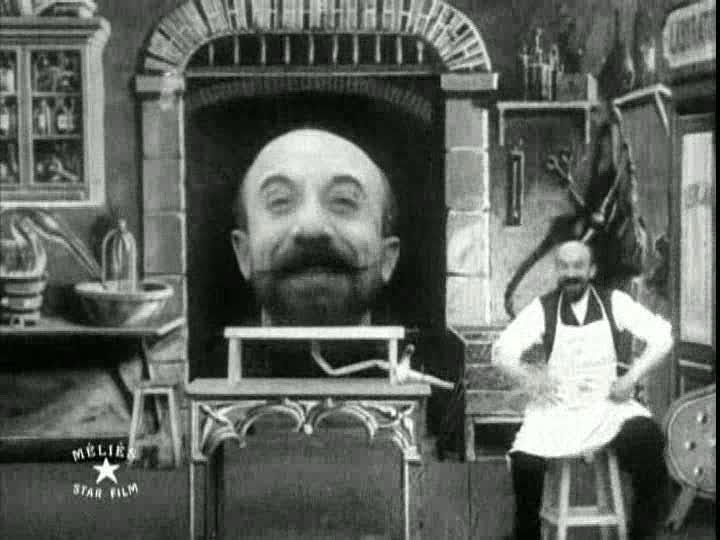The Melies Mystery (2021)
Ever see the 2011 movie, Hugo? It’s a beautiful film about a young and inventive boy who discovers the special effects pioneer working as a toy seller in a Paris train station. Amazingly enough, director Martin Scorsese wasn’t too far off. If anyone is looking to fill in the blanks, the 2021 documentary, The Melies Mystery is an excellent look at Georges Melies’s life and why he was so special.
The film is wonderfully narrated by Leonard Maltin and features interviews with various French film historians and Heather Linville of the Library of Congress, and does a great job of bridging today’s filmmaking techniques with Melies’s methods. Naturally, the documentary is peppered with his shorts, showing the wide variety of gags and stories Melies filmed.
Georges Melies was born in Paris in 1861, and from the beginning entertainment intrigued him. He loved to draw and began puppeteering at age ten. His dad thought show business was a dead end, though, and initially Georges worked in the family shoe business.
In between working in London and Paris and marrying Eugenie, the daughter of a fellow shoemaker, Georges continued to study theater arts, particularly illusionism, and when his dad retired in 1888, Georges took his share of the money from the sale and bought the Robert Houdin Theatre. There he became an increasingly popular showman, constantly coming up with new tricks and theatrics.
The Lumiere brothers were the reason Georges became immersed in film, and he did their techniques one better when, while editing one of his own short films, noticed a family and a horse disappearing from a street scene from take to take. The wheels in Georges’ head started turning, and he began working many of his stage theatrics into his shorts, creating complicated composite shots involving making people disappear and placing the heads of his actors in various places. One film shows him taking a mallet to his own head as if he’s playing Whack-a-Mole.
Naturally, Melies had his imitators (Charles Pathe was particularly grabby), and it’s kind of appalling how brazen they were. People thought nothing of bootlegging Melies’ films, despite the Star Films logo being clearly visible in the midst of the action. They didn’t care. They’d just scratch it out. Or they’d recreate the films, sometimes shot for shot. Mystery shows plenty of bits from these movies juxtaposed with Melies’ works, and most of them are pretty lame.
Since copyright laws weren’t yet a thing, Melies had to be a smart businessman as well as a great showman. His brother, Gaston, moved to New York and set up an American branch of the business, which would become important later.
While there seemed nowhere for Georges to go but up, time was against him. Audiences wanted features instead of short films and Melies’s filmed illusions went out of fashion. The First World War happened. Melies’ theatre was torn down so the street it sat on could be widened. And in the most unkindest cut of all, his chief rival, Charles Pathe took over Melies’ studio.
Demoralized and angry, Melies set fire to his negatives so that Pathe couldn’t get his hands on them, after which he sank into temporary obscurity. So how is it that we still have Melies films today? I won’t ruin the answer, but suffice it to say that it doesn’t do to put all of one’s eggs in a single basket.
The Melies Mystery not only answers the question of how Melies’ films were saved, but gives a lot of fascinating information about why so many silent films haven’t survived into the present day, or if they have, they won’t be around much longer. Essentially, the chemical processes used in manufacturing the negatives and prints have resulted in films turning to dust. As Heather Linville says in Mystery, saving these movies is a race against time.
That Melies’ films have survived is a miracle in terms of film history, and The Melies Mystery is a great introduction to this clever and fun pioneer of the big screen, whose work continues to fascinate and entertain over a century after his heyday.
The Melies Mystery is currently streaming on HBO Max.
My grade: A+
Directed by Eric Lange.
Written by Eric Lange and Serge Bromberg.
Narrated by Leonard Maltin.




